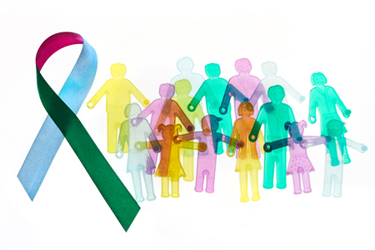Nonprofit Drug Development: An Innovative Solution To Advancing Treatments For Rare Genetic Diseases
By Ashely Winslow, PhD, President & Chief Scientific Officer of Odylia Therapeutics

Every day, research teams across the world are making promising discoveries that could change the lives of people living with rare diseases. Despite these discoveries, over 95 percent of rare diseases still have no available treatment.1 There are many challenges in rare disease drug development that prevent pharmaceutical companies from taking the risks and making the investments needed to bring a drug through regulatory approval. Potential treatments for patients in critical need might be sitting on the shelves waiting to be developed. The traditional drug development model does not work for many rare diseases; therefore, we have an obligation to consider alternative models. The nonprofit model is the only option for many rare diseases and prioritizes the clinical potential of a therapeutic, not the commercial opportunity.
Challenges in Rare Disease Drug Development
There are several unique challenges in rare disease drug development that prevent potential new treatments from reaching patients. One of the biggest challenges is population size. In the United States, a disease is considered rare if it affects fewer than 200,000 people.2 The prevalence of many rare diseases is even lower. Small patient populations pose several problems for drug developers. It is difficult to facilitate clinical trials with very few patients scattered worldwide. But the biggest challenge for drug developers is the fact that treatments for small patient populations often do not generate the profits expected by investors and shareholders in the industry.
Drug development is a long and costly process. The traditional drug development model relies on a sufficient return on investment to justify the amount that must be spent to develop a treatment and the investment made by stakeholders. Despite the best of intentions and mission of a company, the fact that profit must be generated cannot be ignored. For-profit drug developers must ensure that their business is sustainable in order to support investors and stakeholders and to continue developing new treatments. Many companies either cannot afford to put their resources into developing rare disease treatments or, even if they can afford it, shareholders may not value a program that yields a smaller return on investment. There are risks with any drug development program. In rare diseases, that risk does not present the potential return that drugs for more common diseases can achieve. That is why many investors steer clear of rare diseases. The financial model of traditional drug development simply does not work with diseases that cannot guarantee sufficient profit.
Overcoming this challenge requires complex problem solving and strategic thinking. We can put pressure on the traditional system of profit to do better by advancing a nonprofit model to bring more treatments from the lab into the hands of patients and families who desperately need them.
The Nonprofit Drug Development Model
The nonprofit drug development model relies on donations, grants, and strategic partnerships to fund research. This approach gives organizations the freedom to focus directly on the mission of advancing successful new treatments. Nonprofit organizations are able to focus on diseases that other companies do not see as profitable. Because the model does not rely on increasing the overall value of a company, more time and resources can be invested into ensuring the development of a safe and effective treatment through a focus on the science and clinical outcomes. This, in turn, removes several barriers in rare disease drug development and allows an organization to help support the advancement of a treatment regardless of prevalence or commercial interest.
Nonprofits can also operate differently than for-profit companies within the broader field of rare disease because nonprofits have greater opportunity for innovative partnerships without concerns about competing with other biotech and pharma companies. Nonprofit drug developers can build strategic partnerships with vendors and industry who wish to support a nonprofit mission. These partnerships can also enable the larger field, as nonprofits have the unique ability to share resources to support academic groups and other nonprofits as well as for-profit companies.
It is important to consider that money and resources are still needed to develop a treatment. Therefore, nonprofits must have a compelling mission that motivates donors. The drive of a nonprofit team must be infectious to attract others to the mission of the organization. Decision making does not have to hinge on increasing the overall value of the organization, and energy should be put into helping others see the greater good in supporting the nonprofit’s mission.
Nonprofit Drug Development in Action
Nonprofit drug development can provide many benefits to patients and families in rare disease communities. One example of this model in action is Odylia Therapeutics’ recent effort to develop a gene therapy, OT-004, for the treatment of Leber congenital amaurosis 6 (LCA6), a rare vision loss disorder.
OT-004 is an investigational gene therapy that is designed to deliver a functional copy of the RPGRIP1 gene. Odylia Therapeutics, a nonprofit biotech organization, licensed this gene therapy to a pharmaceutical company in 2019. Despite strong efficacy and safety data as well as a significant initial investment, the company made the decision to terminate the program. Unfortunately, this is an example of what can happen when a patient population is too small, or a company does not predict a reliable return on investment. This is where nonprofit drug development organizations can step in.
Odylia took back ownership of the program in 2021 after evaluating the available data and determining that the drug had the potential to be a safe and effective treatment. To ensure the program could move forward, Odylia partnered with patients and families and worked to share the mission with donors who could help to financially move this effort forward when no one else would. Now, the cost of development has been reduced thanks to lower licensing fees and the speed of development has accelerated through strategic partnerships. After originally being terminated, the program continues to move forward and is in the final stages of preclinical studies and the submission of an investigational new drug (IND) application. The treatment has already been granted Orphan Drug Designation and Rare Pediatric Disease designation by the U.S. Food and Drug Administration (FDA).
This is a prime example of the power that nonprofit drug developers can have when it comes to moving promising research forward. Sometimes, a nonprofit might move the entire research effort forward. Other times, the nonprofit simply acts as a safety net to keep a program moving while working with other stakeholders to find a new path forward. Oftentimes, like in the case of OT-004, nonprofits are the only organizations that can champion a program when no one else will.
Keys to Success
While nonprofit drug developers have the unique ability to focus on developing a safe and effective treatment without the added weight of generating profit, there are challenges that require a strong foundation to be able to address.
There are several keys to success that every nonprofit drug developer can use to ensure they can best support the communities they are seeking to help:
- Sustainability – Every organization needs sufficient financial freedom to invest and drive their programs. This means a significant donor base or a means to generate revenue that can be invested back into the organization.
- Mission – A compelling mission that motivates donors is especially important for nonprofits. Ensure all members of your team are aligned on a shared goal of providing therapy to those who need it.
- Focus – The path to reaching approval for a treatment is likely to change over time. It is important to commit wholeheartedly to the focus of the organization so that others can see the true sincerity of the mission and leadership behind it.
- Adaptability – Resources are usually more limited in nonprofits compared to for-profit companies. Being resourceful and adaptable while maintaining focus can be key to survival in difficult times.
While investments into rare disease drug development continue to decline, hundreds of communities remain in desperate need of access to treatment. The challenges between rare diseases and traditional drug development mean the nonprofit approach might be the only chance left to move programs forward. With the right mission and sufficient resources, nonprofit drug development is key to bringing life changing treatments to people living with rare diseases.
 Dr. Ashley Winslow is the President and Chief Scientific Officer of Odylia Therapeutics, a nonprofit drug development company dedicated to advancing life changing therapies for people living with rare genetic diseases. In her previous roles, Dr. Winslow worked at the Orphan Disease Center at the University of Pennsylvania where she was the Senior Director of Portfolio Development and Translational Research. Prior to the Orphan Disease Center, she worked at Pfizer as an Associate Director of Neuroscience Genetics. Dr. Winslow received her Ph.D. from the University of Cambridge in Medical Genetics and Molecular Cell Biology and completed her Bachelors degrees in Chemistry and Anthropology from the University of Florida.
Dr. Ashley Winslow is the President and Chief Scientific Officer of Odylia Therapeutics, a nonprofit drug development company dedicated to advancing life changing therapies for people living with rare genetic diseases. In her previous roles, Dr. Winslow worked at the Orphan Disease Center at the University of Pennsylvania where she was the Senior Director of Portfolio Development and Translational Research. Prior to the Orphan Disease Center, she worked at Pfizer as an Associate Director of Neuroscience Genetics. Dr. Winslow received her Ph.D. from the University of Cambridge in Medical Genetics and Molecular Cell Biology and completed her Bachelors degrees in Chemistry and Anthropology from the University of Florida.
